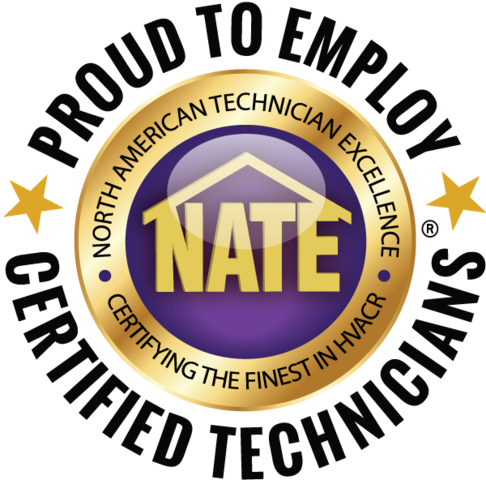A well-functioning furnace is essential for keeping your home warm and comfortable during the colder months. Regular maintenance can help, but knowing when to call for furnace repair can prevent minor issues from becoming major problems. Timely furnace repair can save you from high energy costs and ensure your system runs efficiently.
Common Signs You Need Furnace Repair
Identifying early signs of furnace issues can prevent costly repairs and extend the life of your heating system. Here are some common indicators that you may need furnace repair:
1. Strange Noises: Unusual sounds like banging, rattling, or squealing can signify problems within your furnace. These noises often indicate loose parts, ignition issues, or motor problems.
2. Inconsistent Heating: If some rooms in your home are warmer or cooler than others, your furnace may not be distributing heat evenly. This can result from clogged filters, ductwork problems, or a failing blower motor.
3. High Energy Bills: A sudden increase in your energy bills can indicate that your furnace is working harder than it should. This can stem from various issues such as dirty filters, thermostat problems, or worn-out parts.
4. Frequent Cycling: If your furnace frequently turns on and off, it could be a sign of short cycling. This issue can be caused by an oversized furnace, a malfunctioning thermostat, or airflow problems.
5. Yellow Pilot Light: A healthy furnace should have a blue pilot light. If it turns yellow, it may indicate the presence of carbon monoxide, requiring immediate attention from our professionals.
The Furnace Repair Process: What Our Technicians Do
Understanding the furnace repair process can help you feel more confident and prepared when you call for professional assistance. Our technicians follow a systematic approach to diagnose and fix your furnace issues.
1. Initial Inspection: Our professionals begin by conducting a thorough inspection of your furnace. They check various components, including the thermostat, filters, ductwork, and electrical connections, to identify the root cause of the problem.
2. Diagnosis: After the initial inspection, our technicians analyze their findings to determine the specific issue affecting your furnace. They will then explain the problem and recommend the best course of action to resolve it.
3. Repair: Once the issue is identified, our technicians proceed with the necessary repairs. This may involve replacing faulty parts, cleaning components, or adjusting settings to restore your furnace's functionality. Throughout the process, they use high-quality tools and materials to ensure lasting results.
4. Testing and Verification: After completing the repairs, our professionals test the furnace to ensure it operates correctly. They check for proper airflow, temperature consistency, and efficient performance. This step ensures that the issue has been fully resolved and your furnace is ready to keep your home warm.
5. Final Assessment and Recommendations: Before concluding the service, our technicians provide a final assessment of your furnace's condition. They may offer recommendations for future maintenance or upgrades to improve efficiency and prevent further issues.
Preventative Measures to Avoid Frequent Furnace Repairs
Preventing frequent furnace repairs is crucial for maintaining your heating system and saving on costs. Here are some essential measures to keep your furnace in good condition:
1. Regular Maintenance: Schedule routine maintenance checks with our professionals to keep your furnace running efficiently. Regular inspections help identify and fix minor issues before they turn into significant problems. This includes cleaning parts, checking for wear and tear, and ensuring all components work properly.
2. Replace Filters: Change your furnace filters regularly. Dirty filters restrict airflow and force the furnace to work harder, leading to potential breakdowns. Replacing filters every 1-3 months, depending on your home’s environment, can enhance performance and improve air quality.
3. Keep Vents Clean: Ensure that all vents and registers are clean and unobstructed. Blocked vents can cause your furnace to overheat and shut down. Regularly vacuum and dust around these areas to maintain proper airflow.
4. Monitor Thermostat: Use a programmable thermostat to regulate your home's temperature efficiently. Avoid setting the temperature too high or too low to prevent the furnace from working excessively hard. A well-maintained and properly used thermostat can prolong your furnace's lifespan.
5. Inspect Ductwork: Periodically check your home's ductwork for leaks or blockages. Sealing any leaks and cleaning the ducts can improve your furnace’s efficiency and prevent overworking the system.
How to Choose the Right Professional for Furnace Repair
Selecting the right professional for furnace repair is essential for quality service and long-term reliability. Here are some factors to consider when choosing a furnace repair technician:
1. Experience and Certification: Look for professionals with extensive experience and proper certification. Certified technicians have the knowledge and skills to diagnose and repair furnace issues accurately. Ask about their experience and verify their credentials before making a decision.
2. Reputation and Reviews: Research the reputation of the furnace repair company. Check online reviews and testimonials to gauge client satisfaction. Positive reviews and high ratings often indicate reliable and trustworthy service.
3. Service Guarantee: Choose a repair service that offers a warranty or guarantee on their work. This ensures that if any issues arise after the repair, you can have them addressed without additional costs. A service guarantee reflects the company's confidence in their work quality.
4. Transparent Pricing: Look for professionals who provide clear and upfront pricing. Avoid companies that offer vague estimates or charge hidden fees. Request a detailed quote before the repair begins to understand what you will be paying for.
5. Availability: Ensure the company can provide timely service, especially during emergency situations. A reliable furnace repair service should offer prompt support to address urgent issues and restore your home’s comfort quickly.
Conclusion
Knowing when to call for furnace repair and understanding what to expect during the repair process helps maintain your heating system efficiently. Recognizing common signs that indicate a need for repair and following preventative measures can keep your furnace in top condition. Additionally, choosing the right professionals for the job is crucial for quality and reliable service.
For dependable furnace repair in South Salt Lake, contact S.O.S. Heating & Cooling today. Let our professionals ensure your home's heating system operates at its best!
















